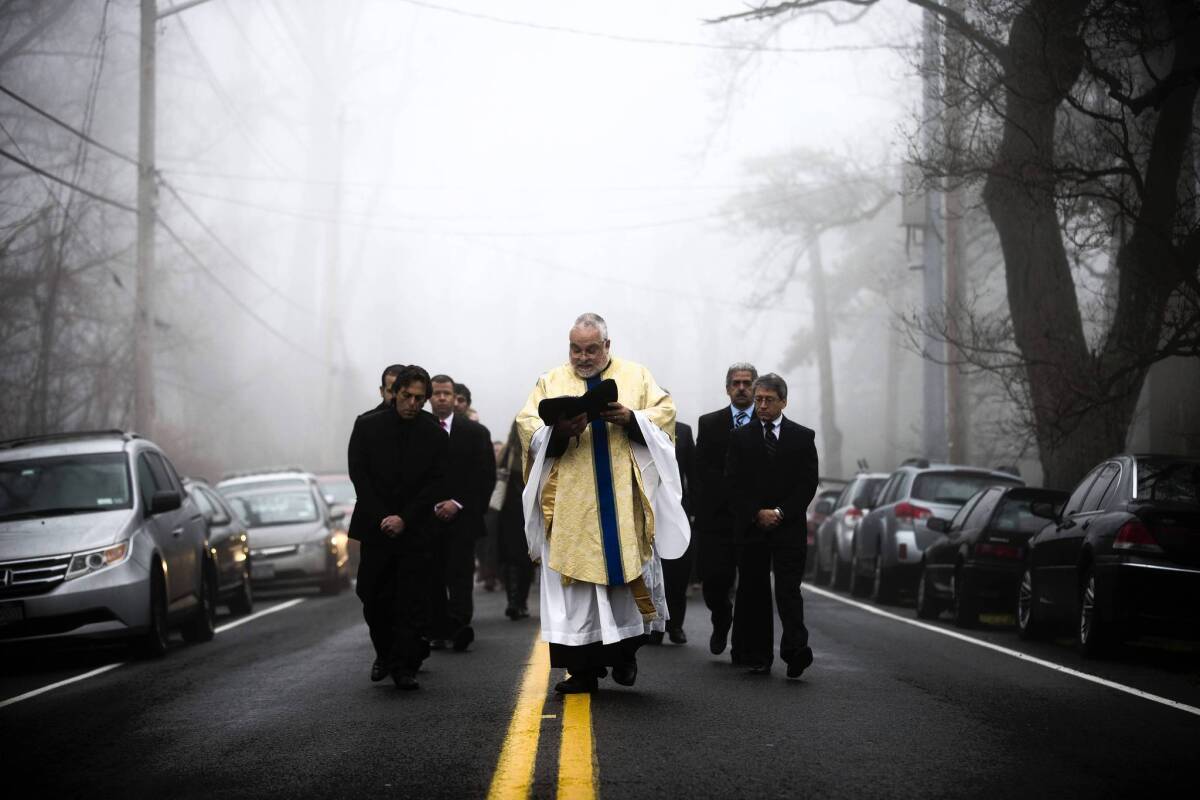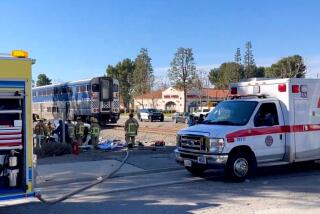New York train crash could have been prevented, Feinstein says

The New York commuter train crash that killed four passengers over the weekend was “preventable,” Sen. Dianne Feinstein (D-Calif.) said Thursday, pushing for stronger rail safety standards as fallout over the tragedy continued to spread.
As the investigation into Sunday’s derailment continues, the train’s engineer has been suspended without pay, according to Kevin Ortiz, a spokesman for the Metropolitan Transit Authority, which operates the Metro-North train and other commuter lines in New York.
It was the first crash in Metro-North’s history to kill passengers. Officials have said that William Rockefeller apparently went into a daze shortly before the train sped into a 30-mph curve in the Bronx at 82 mph and tumbled from the tracks.
Sixty passengers were also hurt in the incident, which has drawn scrutiny of Rockefeller’s claims of distraction and of impending safety upgrades that have proved politically troublesome.
Rockefeller’s lawyer, Jeffrey Chartier, said that just before the crash, the engineer experienced a nod or “a daze,” similar to road fatigue or highway hypnosis.
What Rockefeller remembers is “operating the train, coming to a section where the track was still clear — then, all of a sudden, feeling something was wrong and hitting the brakes,” Chartier told reporters after meeting with the National Transportation Safety Board, which interviewed Rockefeller this week. “He felt something was not right, and he hit the brakes.”
Many drivers are anecdotally familiar with highway hypnosis, having gotten somewhere but forgotten parts of the drive. But Stephen J. Morse, a professor of law and psychology at the University of Pennsylvania, said there were few studies documenting the phenomenon, and that the studies “suffer from the problem of generalizing from the lab to the real world.”
“Most cases of the phenomenon, whether in trucks, cars, or perhaps trains, do not lead to accidents and don’t come to our attention,” Morse added.
Officials say that the Metro-North train’s brakes seem to have been working properly, so attention is shifting to a 2015 deadline for railroads to install systems that automatically slow down or stop trains if engineers exceed speed limits or are on a collision course with another train.
Feinstein said the technology probably would have prevented the derailment in the Bronx regardless of whether mechanical failure or human error caused it.
The senator championed the 2008 legislation that set the Dec. 31, 2015, deadline for railroads to install “positive train control” after a Los Angeles Metrolink train collided head-on with a Union Pacific freight train near Chatsworth. The September 2008 collision killed 25 people and injured more than 130 others.
The NTSB has long recommended the technology, and Feinstein cited New York’s derailment as a reason to stick with the 2015 deadline in the face of industry opposition.
The railroad industry has been lobbying lawmakers to extend the deadline to 2020, citing an estimated cost of at least $10 billion and the complexity of implementing the system on about 60,000 miles of track nationwide.
“The fact remains that a revolutionary technology the size and magnitude of what Congress mandated will simply not be fully tested and ready by the 2015 deadline,” the Assn. of American Railroads said in a statement. “We are working as fast and as safely as we can to install positive train control, but we must be honest and realistic about what is and is not possible.”
New York’s MTA said in a statement provided to The Times that it was working to install positive train control “on the most aggressive schedule possible.”
But it said that putting the system in place by the 2015 deadline would be “very difficult for the MTA as well as for other commuter railroads.”
Some railroads complain that Congress hasn’t followed through on its pledge to provide $250 million to help pay for the technology, having provided only $50 million so far.
“Congress needs to do its part,” the American Public Transportation Assn. said. “Without additional funds, most commuter rail systems, which are all public agencies, will be constrained in their ability to proceed as quickly as possible.”
Metrolink officials in California, however, say they are on schedule to complete installation of the high-tech braking system well ahead of the deadline.
Simon reported from Washington and Pearce and Muskal from Los Angeles.
More to Read
Start your day right
Sign up for Essential California for news, features and recommendations from the L.A. Times and beyond in your inbox six days a week.
You may occasionally receive promotional content from the Los Angeles Times.









